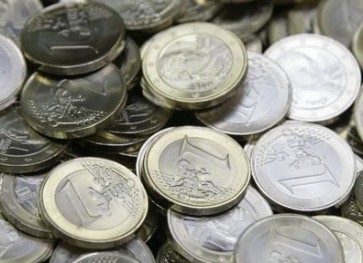EC, IMF LAUD ROMANIA'S AUSTERITY PLAN IMPLEMENTATION
The European Commission and the International Monetary Fund have evaluated positively Romania's austerity policies which are the condition for the internationalbailout of Bulgaria's northern neighbor.
Staff teams from the European Commission (EC) and the International Monetary Fund (IMF) visited Bucharest from July 20 until August 1, for the regular quarterly review of Romania's economic program, which is supposed to solidify Romania's economic growth while maintaining macroeconomic and financial stability.
"The teams' assessment is that the program remains on track. All performance criteria for end-June were met. The authorities have steadfastly implemented program policies. Continued strong policy implementation will be important to make optimal use of Romania's growth potential. Policies are being strengthened to better position Romania to weather financial market volatility," the EC-IMF statement says.
The EC and the IMF expect continue to project real GDP growth of about 1.5% forRomania. While the contribution to growth by absorption of EU structural funds remains low, a good harvest is expected and exports remain strong, the statement says.
In 2012, the EC and IMF project a growth of 3.5-4% contingent on improved domestic demand, including better absorption of EU structural funds. Romania's nflation is expected to come down, but will remain above the National Bank ofRomania's 2011 inflation target. It is projected to further decline to about 3.5% in 2012. The current account deficit is expected to remain around 4.5% of GDP.
"In 2011, Romania is on track to reach its general government budget deficit target of 4.4% of GDP (in cash terms) and below 5% of GDP in accrual (ESA) terms. In the first semester, VAT and excise duties were better than projected, but non-tax revenue disappointed. On the expenditure side, savings came notably from lower-than-projected capital expenditure, including absorption of EU funds. The government remains committed to reducing the general government budget deficit to below 3% in both cash and accrual (ESA) terms in 2012. Over the coming months, the government will act to meet this challenge," according to the EC and the IMF.
The international institutions recommend that Romania's state-owned enterprises be reformed to make them more efficient, so that they support growth rather than being a drag. These reforms include the sale of majority or minority stakes in some companies and the introduction of professional private management.
According to the EC and IMF, Romania's banking sector remains well capitalized and liquid. The rise in non-performing loans slowed over the last quarter, reaching 13.4% of total loans at end-June. Bank lending to the corporate private sector picked up in the second quarter.
The next EC/IMF of Romania's austerity program is scheduled for late October/early November 2011.
Speaking in Bucharest Monday, IMF's representative in Romania Geoffrey Franks said the Romanian government can afford to raise budget salaries by 1.5% in 2011 and by 4% in 2011.
Back in 2010, Romania cut state salaries by 25% and introduced severe austeritymeasures in order to IMF bailout conditions.
Romania got a EUR 20 B bailout loan from the IMF, the EC, and the World Bankas its economy contracted by 7.1% in 2009.






